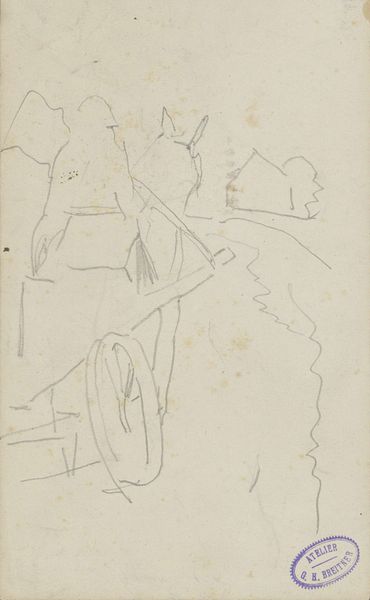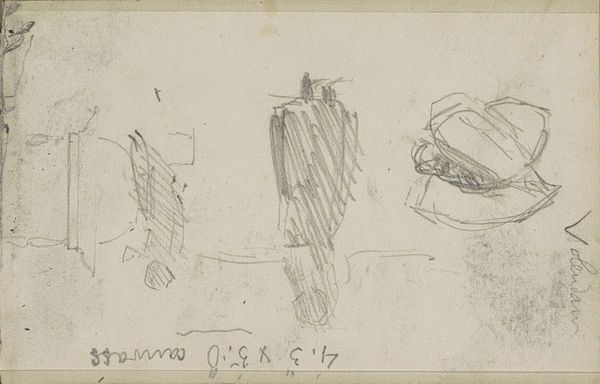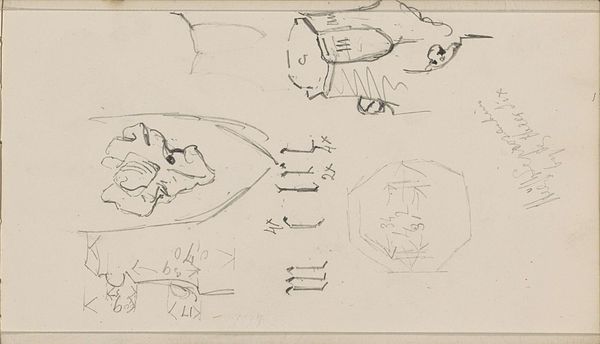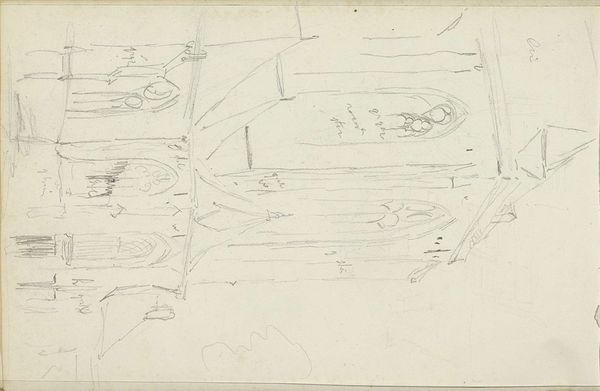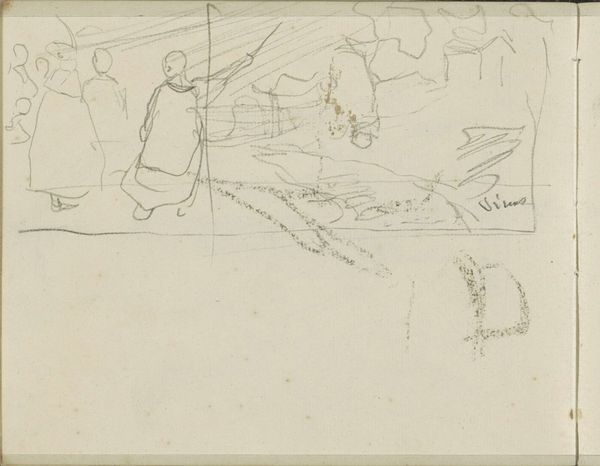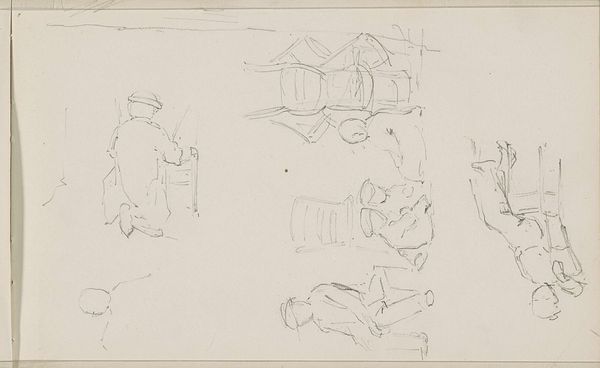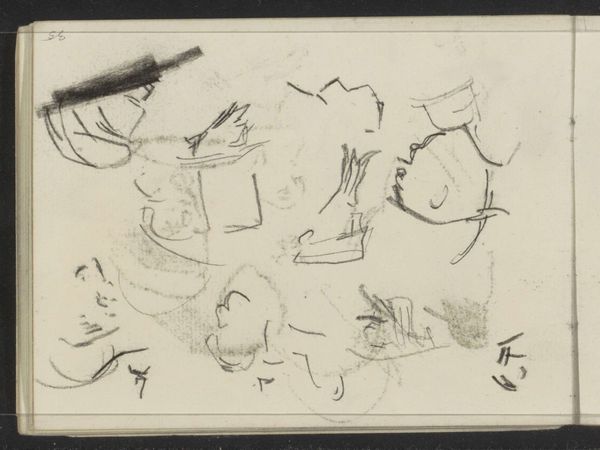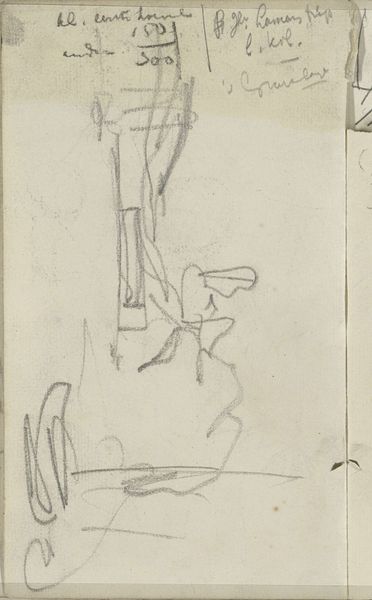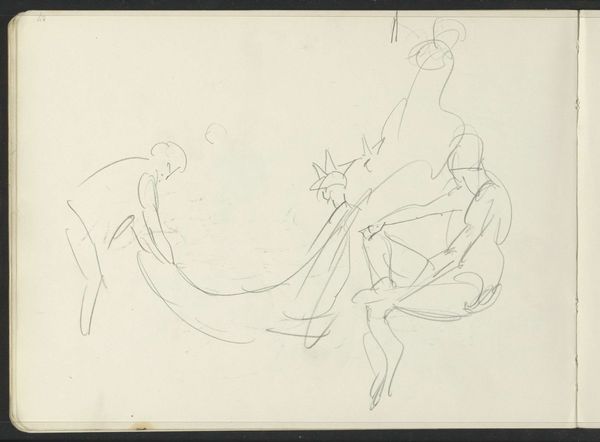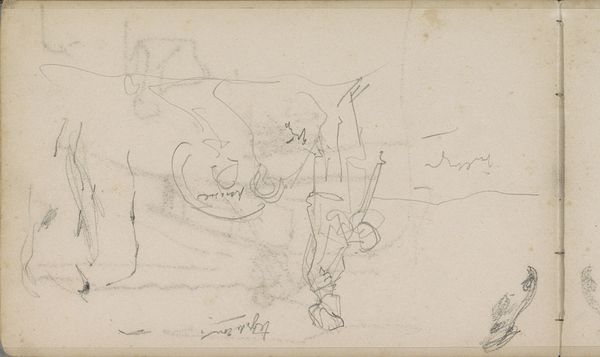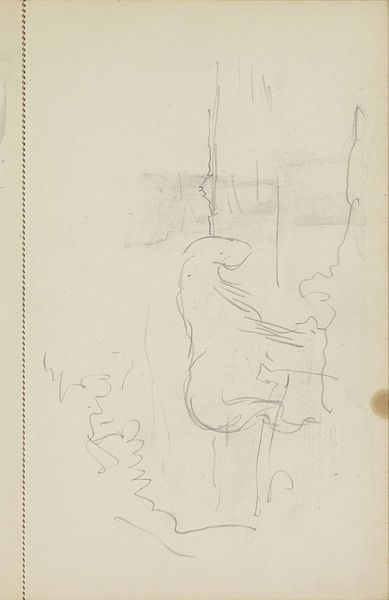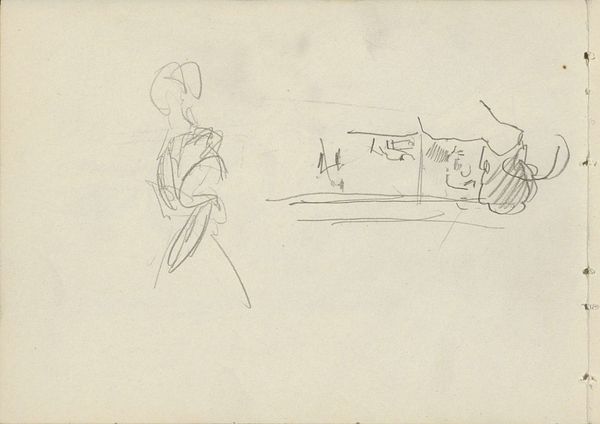
Studieblad, onder andere met een watervogel en grafschildering 1858 - 1860
0:00
0:00
drawing, paper, pencil
#
portrait
#
drawing
#
pen sketch
#
landscape
#
paper
#
pencil
#
sketchbook drawing
#
academic-art
Copyright: Rijks Museum: Open Domain
Editor: Here we have "Studieblad, onder andere met een watervogel en grafschildering," a study sheet done between 1858 and 1860 by Willem de Famars Testas, using pencil and paper. There's an almost academic quality to the draftsmanship, but something about the collection of imagery feels like the artist was assembling ideas or memories. What do you make of this work? Curator: What strikes me immediately is the orientalist gaze prevalent in the 19th century. Consider the context: Europe was deeply involved in colonial ventures. How does this study sheet reflect the power dynamics of the time, with Europeans appropriating and interpreting Egyptian imagery? The waterfowl, seemingly observed from life, juxtaposed with possible ancient imagery...What story do you think Testas is trying to tell, or perhaps, to what cultural narrative is he subscribing? Editor: So, it’s not simply a sketch, but almost a statement? The juxtaposition, as you mentioned, now seems purposeful, almost like comparing "wild" nature with stylized depictions from a society that Europeans considered exotic. Curator: Exactly! Think about the intellectual climate, the rise of Egyptology, and the ways in which European artists engaged with, and often misrepresented, non-Western cultures. What is absent from these depictions, what lived realities have been erased, so to speak? Who controls the means of representation here? The very act of sketching implies observation, control. This isn't just about art, it's about power. Editor: I never would have considered that just looking at a drawing of a bird and some tomb paintings. Curator: These images from other places never exist in a vacuum, remember always that they’re embedded in the politics of seeing and knowing. Editor: Thank you. I will definitely think more about context when looking at pieces like this moving forward. Curator: An essential practice of truly appreciating a work. Thank you.
Comments
No comments
Be the first to comment and join the conversation on the ultimate creative platform.
